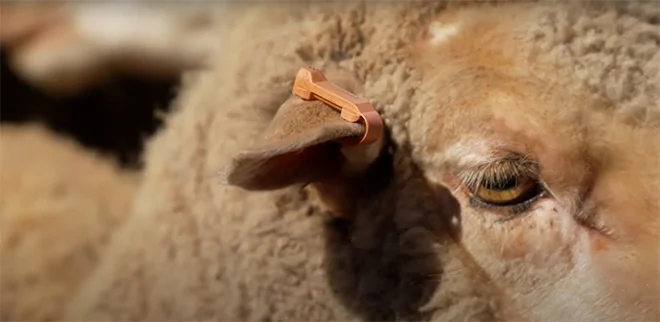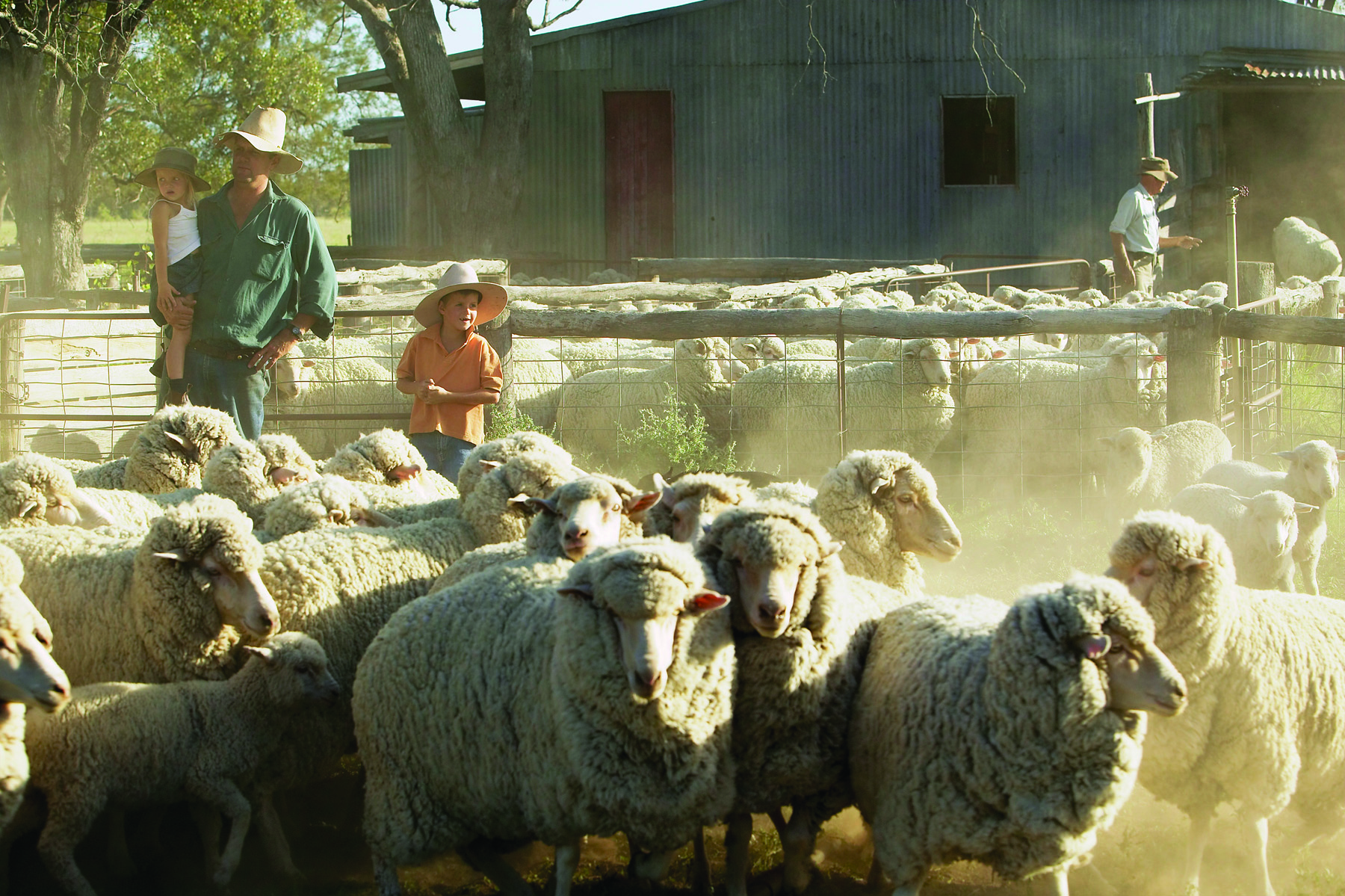Driving productivity with EID

Electronic identification tags (EID) are becoming mandatory, so why not make the most of the technology to help you achieve the goals of your sheep enterprise? We've pulled together some information to help you utilise data collected via EID to increase productivity and profit.
Electronic identification tags (EID) are becoming mandatory, so why not make the most of the technology to help you achieve the goals of your sheep enterprise?
What do I need to collect data using EID?
Data collection using EID requires a device to read the EID tag and a device to input the data. There are some handheld devices which can achieve both of these functions. However, if your handheld reader doesn’t let you enter data directly into the device or if you are using a panel reader, then you will also need a device such as an indicator or laptop to capture the data. Finally, you will need software to manage the data, such as Excel. Alternatively, you can utilise a service provider for data management. Some additional equipment that you may require, depending on your objectives, are a barcode printer, barcode scanner and scales for weighing fleeces.
Agriculture Victoria and AWI Extension SA have some useful information about EID equipment and software that can help you identify what may suit your needs and budget. We also recommend that you visit suppliers or a neighbour to test out different equipment and see what works for you. You don’t need to buy expensive equipment at the outset; service providers can be utilised while you find your feet and work out if you’d like to invest in your own equipment. Perhaps you have neighbours or friends who may be interested in co-purchasing equipment that can be shared to reduce costs?
What are some of the benefits of EID?
- Increased efficiency of recording and managing data
- Increased accuracy of data compared with visually reading tags
- Ability to measure the performance of individual animals
- Identify superior animals to retain and poor performing animals to cull (=increased selection pressure)
- Ability to make more informed management decisions
- Ability to improve the allocation and utilisation of resources e.g. pasture, supplementary feed and labour
- Enhanced traceability and transparency throughout the supply chain
What data should I record?
There is no point in collecting data if you don’t have a use for it. Therefore, consider:
- The goals of your enterprise and where you want to be in 5-10 years
- Your breeding objective and which traits are profit drivers
- What data can help you to improve your management and save time and labour
- What data are easy for you to record that can help reach your objectives
Utilising EID doesn’t need to create extra work. Be opportunistic and base your recording around your management. Collect as much data as you want when your sheep are already in the yards, such as during pregnancy scanning, lamb marking or shearing. If you are new to EID, then you may like to start recording data on a small scale, such as recording a few traits on your maidens or latest drop of progeny, so that you can familiarise yourself with the equipment and the processes involved with data collection.
Valuable data that can be recorded include:
- Pregnancy scanning results (litter size)
- Lamb birth type
- Dam age
- Wet/dry udder assessment of ewes at marking
- Fleece weight and micron
- Weight and condition score
Some pregnancy scanning contractors have technology to record pregnancy scanning data against EID for you, so check with your scanner when booking.
Once you’ve determined what data is of value to your enterprise, make sure to include when and what data needs to be collected in your annual management plan.
Examples of utilising data collected via EID to increase productivity and profit
Increase selection pressure by identifying superior ewes and culling ‘passengers’
Identifying ewes with superior performance to retain and those with poor performance to cull will increase reproductive efficiency and selection pressure within a flock. Pregnancy scanning, lamb marking and weaning are key times to make use of EID and record data for individual ewes that can be used to identify the performers and passengers.
Culling ewes that are scanned dry or fail to rear lambs (e.g. dry udder assessment at marking) in two consecutive years can be used as a strategy to increase the reproductive performance of your flock, largely by reducing the number of ewes scanned dry.
Similarly, you can identify ewes that repeatedly rear lambs to marking/weaning and retain these superior ewes in your flock. If you match lambs to their dams, you could take this to the next level by determining the number of lambs and kilograms of lamb weaned per ewe. This data can then be used to rank ewes to assist with selection decisions.
Use fleece weight and micron data to make informed selection decisions
Fleece weights of individual sheep along with their wool test results, such as micron, can be used together with other production data to rank animals and identify both superior and poor performers. You can also use wool data to monitor progress towards your target fleece weight and wool quality, and to assist with ram purchasing decisions to reach these goals.
How does fleece weighing work? The ideal setup for fleece weighing includes a handheld reader, barcode printer, barcode scanner and fleece scales connected to an indicator. The handheld reader is connected to the barcode printer via Bluetooth. The sheep’s EID tag is scanned and a barcode is printed. This barcode then stays with the sheep whilst it is shorn. The fleece and barcode are then brought to the fleece scales, the barcode is scanned into the indicator and the fleece weight is recorded against the EID.
A barcode printer is also handy for wool testing so that a barcode can be placed in the bag with the wool sample, which is then used by the wool testing facility to record the wool test results against the sheep’s EID.
Use lamb birth type and dam age data to class single- and twin-born lambs from maiden and adult ewes separately
Twin-born lambs have phenotypic disadvantages compared to single-born lambs. Data from the Merino Lifetime Productivity site at Pingelly showed that a higher proportion of twins are culled compared with singles when they are classed together, which may compromise genetic gain for several traits. Lambs born to maiden ewes are also disadvantaged compared to those born to adult ewes. Provided that you have pregnancy scanned for multiples and have lambed singles and twins (and triplets) separately, you can simply record lamb birth type against the lamb’s EID on the marking cradle. If you have lambed your maidens separately from your adult ewes, or lambed in age groups, you can also record dam age on the marking cradle. This data can then be utilised at classing to ensure you are not making biased selection decisions.
Assess the responsiveness of your flock to condition score at joining using ewe CS and pregnancy scan data
Improving ewe nutrition for joining can increase the number of lambs conceived, however the response is variable. The Lifetime Wool project showed that some ewe flocks are responsive to improving condition score at joining (+30 lambs/condition score) whilst others are less responsive (+10 lambs/condition score). This was shown to affect the profitability of ewe management options approaching joining by $1 to $3 per ewe, depending on the value of extra lambs. You can collect data for condition scores at joining and pregnancy scanning to determine the responsiveness of your flock. See the instructions here. Knowing your flock's response is important when deciding about feeding ewes leading up to joining.
Manage animals based on weight and/or condition score and weight gain
Monitoring the weight and/or condition score of sheep within your flock is essential for making informed management decisions that maximise productivity. These include:
- Optimising paddock allocation and supplementary feeding to achieve condition score targets for ewes at joining and lambing, and to optimise the recovery of ewes after weaning
- Ensuring rams are in optimal condition for joining
- Ensuring weaners are achieving their target growth rates for optimal productivity and survival
- Helping to meet market specifications by the target sale date
Monitoring ewe condition score has advantages over liveweight during pregnancy and the dry period, due to the developing foetus and variation in gut fill. A random subsample of at least 25 sheep from the mob allows you to calculate an average condition score for the mob. You can then adjust paddock allocation and/or supplementary feeding as required to meet the condition score targets for each class of sheep.
Amy Lockwood, AWI Extension WA






.png/Zz0yM2JiZjM5ODBlYmMxMWYwOTU5YTYyNTc0YTA0ZjBjZQ==)

